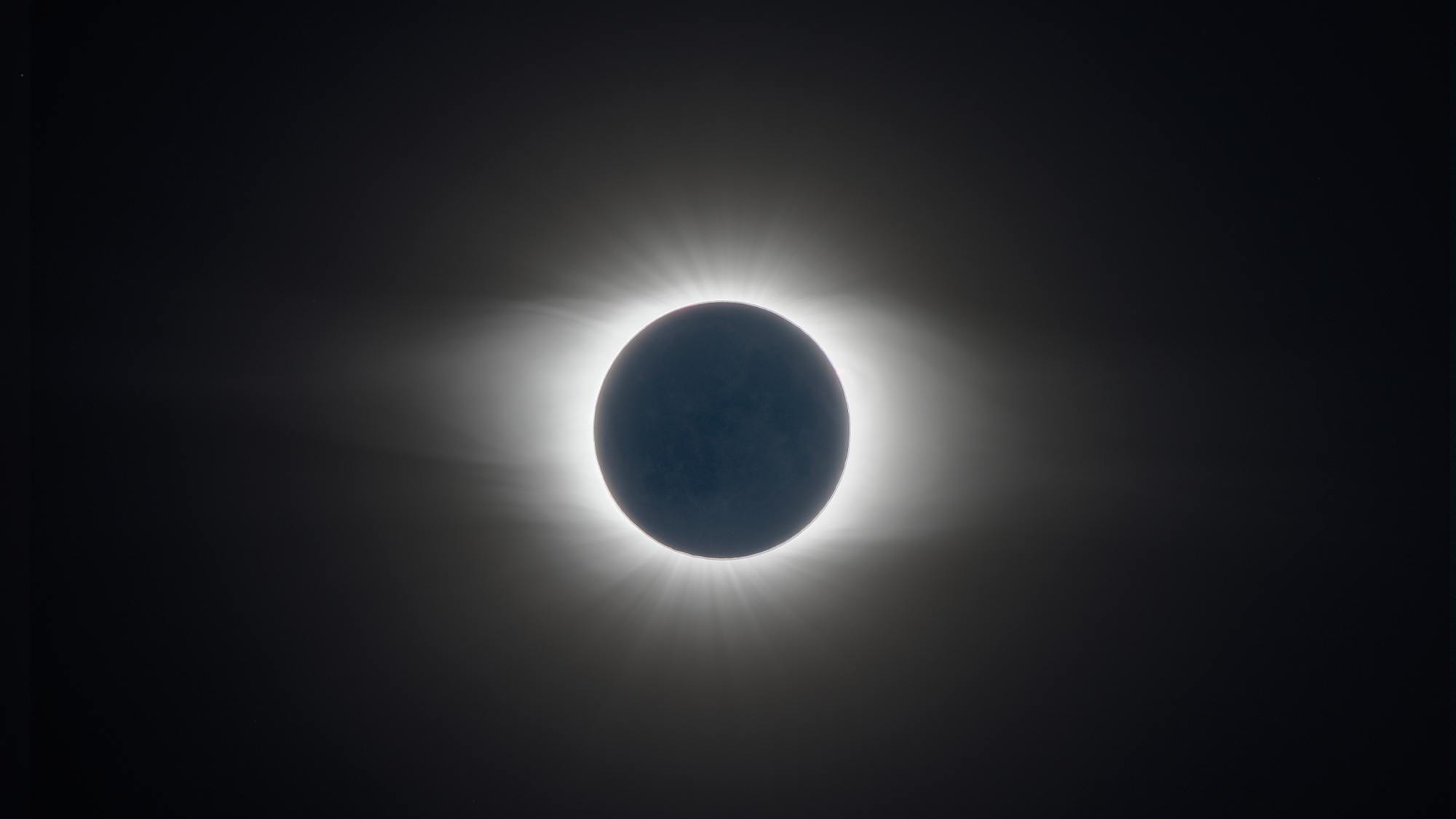

| April 5 and 6 | Full Pink Moon |
| April 7 | 34P/PANSTARRS comet at closest flyby |
| April 20 | Total solar eclipse |
| April 21, 22, and 23 | Lyrid meteor shower |
April is officially Global Astronomy Month, a month-long celebration of all things celestial by Astronomers Without Borders, a US-based club that connects global skywatchers. The event features a Global Star Party and Sun Day and online lessons to highlight the conjunction of art and astronomy. April also happens to be an exciting month for space happenings in general. If you happen to get any stellar sky photos, tag us and include #PopSkyGazers.
[Related: Your guide to the types of stars, from their dusty births to violent deaths.]
April 5 and 6 – Full Pink Moon
The first full moon of spring in the Northern Hemisphere will reach peak illumination at 12:37 AM EDT on April 6. First glimpses of the full Pink Moon will be on April 5, but because it reaches peak illumination so early in Eastern Time, Western time zones will see it peak on the night of April 5.
April’s full moon also goes by many names. The “pink” references early springtime blooms of the wildflower Phlox subulata found in eastern North America. This month’s moon is also the Paschal Full Moon, which determines when the Christian holiday Easter is celebrated. Easter is always celebrated on the first Sunday after the first full moon of spring, so this year Easter will be on Sunday, April 9.
Every year, the April full moon is also called the Frog Moon or Omakakiiwi-giizis in Anishinaabemowin/Ojibwe, the It’s Thundering Moon or Wasakayutese in Oneida, and the Planting Moon or Tahch’atapa in Tunica, the language of the Tunica-Biloxi Tribe of Louisiana.
April 7 – 34P/PANSTARRS comet at its closest point in flyby
The Jupiter-family comet 364P/PANSTARRS will pass within 11 million miles (0.12 AU) of the Earth in early April. The comet will be in the “foxy” constellation Vulpecula and is expected to have a high brightness magnitude of about 12.3. It will be visible in the Northern and Southern hemispheres, but those in Northern latitudes will be able to see it better.
[Related: A total solar eclipse bathed Antarctica in darkness.]
April 20 – Total solar eclipse
Eclipses are always an exciting event, but this one comes with a twist. A total solar eclipse occurs during a rare cosmic alignment of the Earth, moon, and sun. The next solar eclipse will be the first of its kind since 2013 and the last until 2031.
On April 20, a new moon will eclipse the sun, but it will falter a bit. Since it is slightly too far away from the Earth in its elliptical orbit to fully cover all of the sun, the moon will actually fail to cause a total solar eclipse for a brief moment. A ring of fire will be visible for a few seconds over the Indian Ocean, but the moonshadow will completely cover the sun and cause a total solar eclipse by the time it reaches Western Australia. Eclipse chasers in the town of Exmouth and on ships in the Indian Ocean will likely experience about one minute of darkness during the day.
A long display of Baily’s beads around the New Moon and a view of the sun’s pink chromosphere could also appear around the moon during totality on eclipse day. While this eclipse won’t really be visible in the US, we’re only a few months away from the 2023 annular solar eclipse, which will reach totality in the western part of the country this October.
April 21, 22, and 23 – Lyrid meteor shower
The Lyrids are predicted to start late in the evening of April 21 or April 22 and last until dawn on April 23. The predicted peak is 9:06 EDT on April 23. While the peak of the Lyrids is narrow, the new moon falls on April 19, so it will not interfere with skygazing.
Ten to 15 meteors per hour can be seen in a dark sky with no moon. The Lyrids are even known for some rare surges in activity that can sometimes bring them up to 100 per hour. The meteor shower will be visible from both the Northern and Southern hemispheres, but is much more active in the north.
The same skygazing rules that apply to pretty much all space-watching activities are key this month: Go to a dark spot away from the lights of a city or town and let the eyes adjust to the darkness for about a half an hour.
